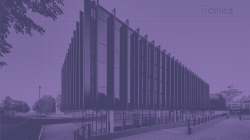Lithuania: the Record-breaking year in the Real Estate sector

Photo: A. Aleksandravičius.
In 2018, the Lithuanian economy grew by 3.6 per cent. The economy looks strong with medium inflation, low unemployment rate and consistent wage growth. Positive economic development has translated well into the real estate market. Office take-up remains high in both Vilnius and Kaunas, with large international IT and finance companies at the forefront of relocation and expansion activities.
Low class A vacancy rates are fuelling competition in the prime office sector, which in turn is keeping rents stable. The office market is in a transition phase, with a record number of new office centres set to open in 2019. The market remains active in terms of investment activity as well – the total transaction volume in 2018 was EUR 400 million, which is the highest ever recorded annual investment volume. The largest purchases occurred in the office and retail segments. The prime office yield remains at 6.25 per cent, while prime retail and industrial yields remain at 6.75 and 7.75 per cent respectively.

Photo: A. Aleksandravičius
Favourable economic conditions
In 2018, retail turnover growth in Lithuania was 7 per cent – one of the highest levels in the European Union. Consumption continues to drive the economy: GDP growth remains above 3 per cent, while the inflation rate remains around 2 per cent. These and other indicators show stable and steady growth.
A tight labour market is driving wage growth both in the public and private sector, which has had a positive effect on net migration. In the last five years, average wage growth was 7%, which is one of the highest rates in the European Union.
Office take-up remains high
Pre-lease agreements have become common in Lithuania, as large international and domestic companies plan office demand in advance. Most of the contracts signed for 1,000 sqm or more are relocations to buildings opening in 2019 or 2020. The market is mostly driven by relocation to and expansion in prime office spaces, with the CBD being the most attractive location both for development of new buildings as well as office take-up activity.

Photo: A. Aleksandravičius
Record high investment activity
In 2018, the total investment volume in Lithuania was EUR 400 million, which is the highest ever recorded annual investment volume. The market’s growth has been driven both by domestic and international investors, the latter being responsible for the largest real estate transactions. For example, the retail segment attracted South African NEPI Rockcastle, which purchased the Ozas shopping mall in Vilnius for a record EUR 125 million.
Investors have begun diversifying their portfolios with investment into other cities besides the capital city Vilnius, such as Kaunas, Klaipeda and Panevezys. It is forecast that in the near future, banks may begin to become more cautious when financing investment activities. The growing cost of debt in the upcoming years could stop yield compression which has lasted almost ten years.
Tourism fuels growth
The number of tourists has been rapidly growing for the past five years. 2018 marked a record 20 per cent growth in the number of aircraft passengers in Lithuanian airports. This development has fuelled economic growth as well as development in the real estate sector.
The hotel market is growing, with large international players such as Hilton, Marriott, Radisson, Moxy and Ibis seeing increased demand in Vilnius and Kaunas. The sector is becoming increasingly more competitive, as it used to be driven primarily by local players.

Photo: A. Aleksandravičius
Active year ahead
2019 is forecast to be another record year in the office segment, with as much as 15 and 35 per cent office stock growth in Vilnius and Kaunas, respectively. The market remains in the transition phase.
Older office buildings have to either increase flexibility of lease terms or renovate in order to stay competitive in the quickly changing speculative office market. The retail segment is also changing, as large players renovate existing shopping malls and introduce new concepts and technology.
Information source: “Newsec”.




